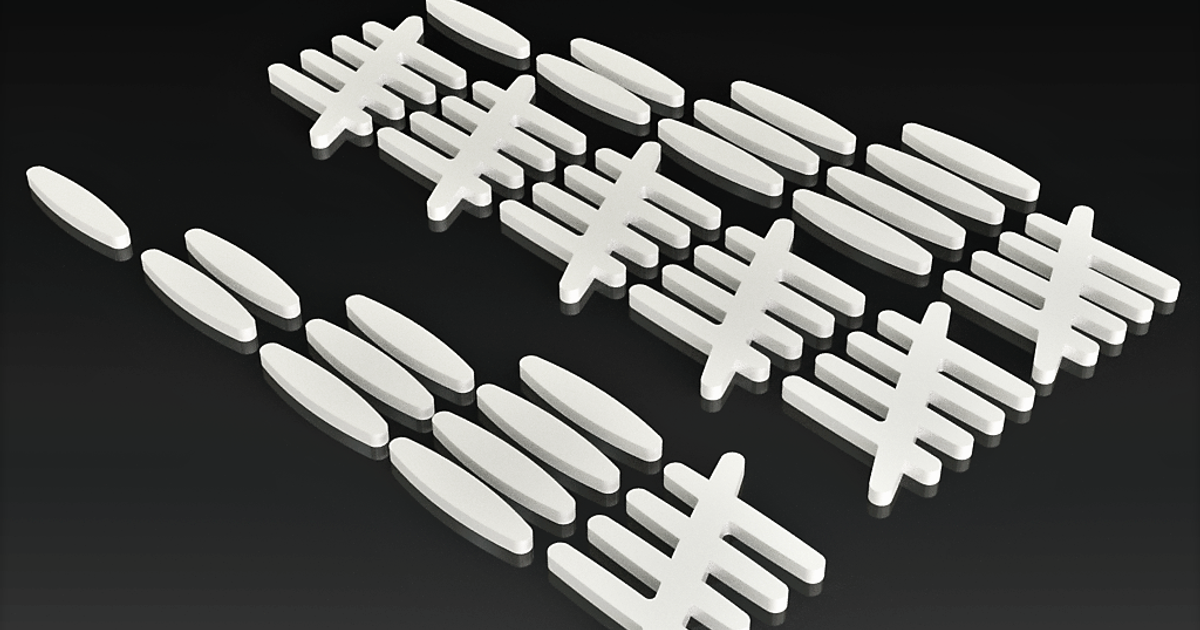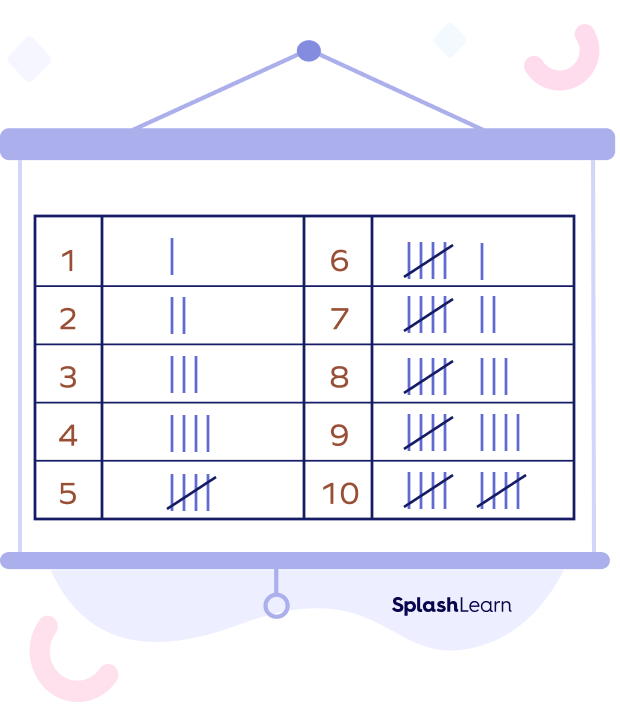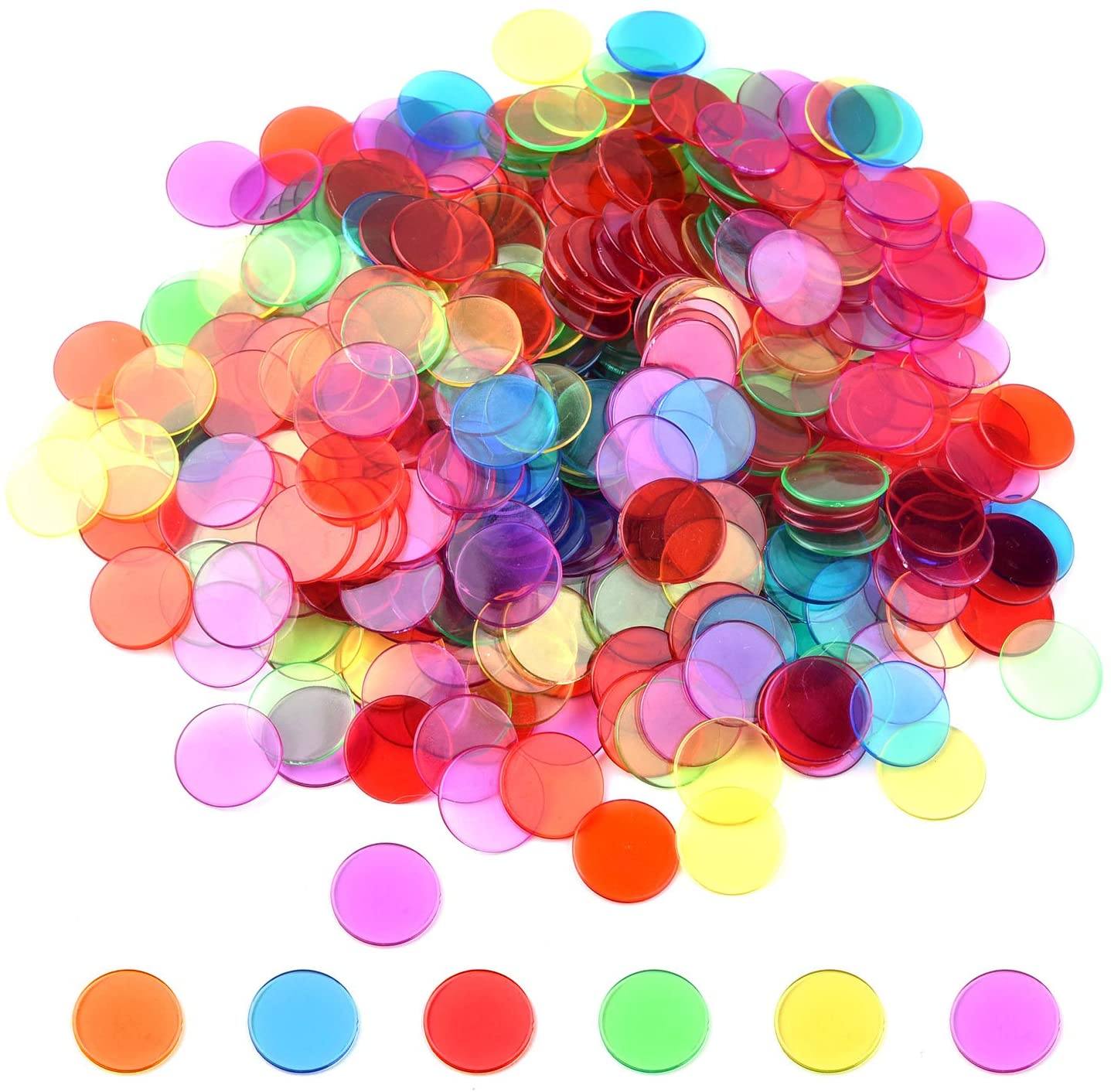Tally Marks Matching pairs
Tally marks, also called hash marks, are a form of numeral used for counting. They can be thought of as a unary numeral system. They are most useful in counting or tallying ongoing results, such as the score in a game or sport, as no intermediate results need to be erased or discarded.

Tally posted by Michelle Johnson
Saying "Tally Mark" in Japanese To refer to the tally mark itself you could say: sei no ji 正の字 The ' sei ' character. (because sei is one of the readings of the kanji) sei no kanji 正の漢字 The 'sei' Chinese character. sei no moji 正の文字 The 'sei' letter. To refer to the method of counting with a tally mark: kakusenhou 画線法 "Stroke lines method."

Premium Vector Tally marks.
Instead of using four lines and a diagonal line to count things, we use the Chinese character 正 (zhèng) to tally. In this article, we are going to explore how 正 works as tally marks and then I'll give seven additional usages of 正 so you can use 正 in your daily conversation as well. U.S. tally system . 正 used for tallying

Tally Marks Mrs. Munoz's Marvels
There was another tally mark system in use in Japan that instead used the five ideographs ⼀ (U+4E00), ニ (U+4E8C), 三 (U+4E09), 王 (U+738B), and 玉 (U+7389), which formed 玉 though not in the correct stroke sequence, to represent the numerals one through five. 5 Conclusion

Tally Marks by Ezequiel Download free STL model
According to Dig Mandarin, "Chinese tally marks add up to make the shape of the Chinese character 正 (pronounced zhèng), which means "correct" or 'true/right.'". I think it's really cool that there is a tally method that has meaning in addition to function, but I couldn't comfortably make this work for me. However, I imagine.

Tally Marks YouTube
wakiten (脇点, "side dot") kurogoma (黒ゴマ, "sesame dot") shirogoma (白ゴマ, "white sesame dot") Adding these dots to the sides of characters (right side in vertical writing, above in horizontal writing) emphasizes the character in question. It is the Japanese equivalent of the use of italics for emphasis in English. ※. 2228.

tally, Japanese Imperial War Museums
Numeral [ edit] 正 せい • ( sei ) A number of ten- duodecillion (10 40) in modern Japanese since 17th century. 5, as tally marks. Similar to four vertical lines followed by a slanted horizontal line crossing through them, this character is used to count to 5 stroke by stroke.

Tally Marks
While Hentaigana is coming this summer (along with further kanji, some Chinese luck symbols and a slew of emoji among other additions), we have to wait some more for the tally marks and small kana forms, till summer 2018, I guess. - Kess Vargavind Feb 20, 2017 at 9:28 Add a comment 1 Answer Sorted by: 11

tally marks by varineur on DeviantArt
Japanese punctuation, also known as 約物 (やくもの) — yakumono, includes all the written marks in Japanese that aren't numbers, 仮名 (かな) — kana or 漢字 (かんじ ) — kanji. Surprisingly, Japanese punctuation is a fairly recent addition to the language. In fact, it was barely used at all until Japan began translating.

Indie Previews! Monkeybrain Releases for the week of January 14th
The tally marking method itself is referred to as 画線法 かくせんほう. Here is where I found this info: https://www.japanesewithanime.com/2018/02/japanese-tally-mark.html?m=1 14 MoxieOrMojo • 5 yr. ago According to Wikipedia, the act of tallying is technically called 画線法 - but most people don't know that term and simply say things like 正の字で数える.

Tally Marks The Kindergarten Kindergarten Math Lesson
The answer is: there's no exact number, the tally marks changed from one to other titles. For reference, this is how the Japanese tally marks work for 1 to 5: Ignoring the fan arts since there are too many variants, Danganronpa: Trigger Happy Havoc Probably 32.

Tally Marks Definition, Chart, Facts, Examples, FAQs
In Japanese, 正, the kanji used in words like tadashii 正しい, "correct," "right," is sometimes used as a tally mark, for counting stuff, e.g. how many goals a team scored, how many days passed, etc., mainly because the kanji has five strokes, so every 正 written down means 5, e.g. 正正 means 10, or it could be part of a word like seisei-doudou 正正堂堂, "fair and square."

Tally Marks Mathematics Quizizz
Japanese can be written horizontally or vertically, and some punctuation marks adapt to this change in direction. Parentheses, curved brackets, square quotation marks, ellipses, dashes, and swung dashes are rotated clockwise 90° when used in vertical text ( see diagram ). Japanese punctuation marks are usually "full width" (that is, occupying.

Tally marks YouTube
Even tally marks, the age- old "five- barred gate" used to score card games or track rounds of drinks, speaks of a deep- seated need to keep things simple. Counting in the prehistoric world would have been intimately bound to the actual, not the abstract. Some. The Japanese count different kinds of things in different ways: there are.

Tally Marks 5 (Issue)
In Japan, this mark reminds people of a sign for "masu" which was originally a square wooden box used to measure rice in Japan during the feudal period. Here is what the tally marks would look like if we compared the two systems.

7 Tally Marks Png Seven 7 Tally Marks,Tally Marks Png free
In Japanese, 正, the kanji used in words like tadashii 正しい, "correct," "right," is sometimes used as a tally mark, for counting stuff, e.g. how many goals a team scored, how many days passed, etc., mainly because the kanji has five strokes, so every 正 written down means 5, e.g. 正正 means 10, or it could be part of a word like seisei-doudou 正正堂堂, ".